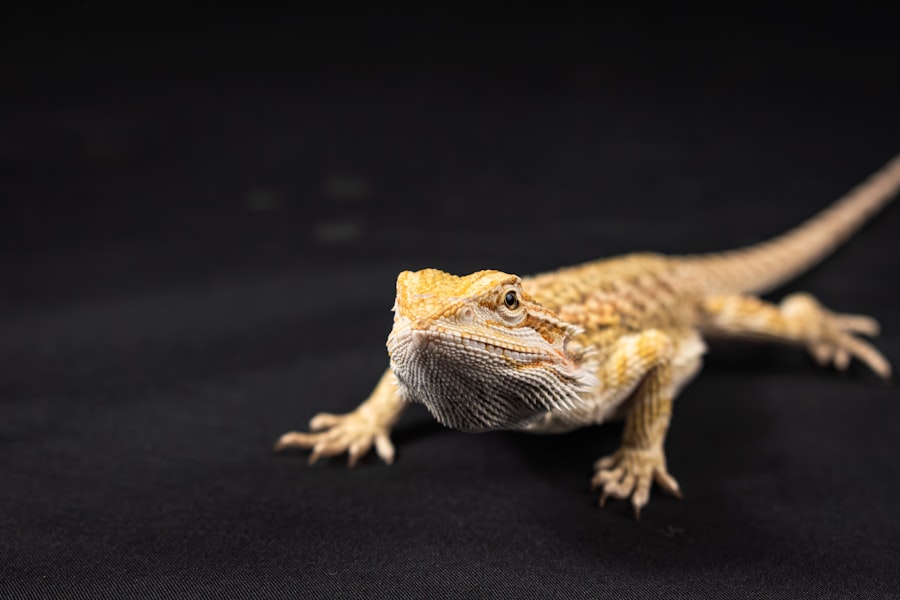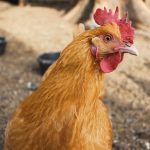Bearded chicken breeds are a distinct category of poultry characterized by their prominent facial feathers. These breeds feature fluffy feathers around their beaks, creating a bearded or muffed appearance. Poultry enthusiasts appreciate bearded chickens for their striking looks, friendly nature, and egg-laying abilities.
These birds come in various colors and sizes, making them adaptable to different backyard flocks. The history of bearded chickens spans centuries, with some breeds having ancient origins. They are valued for both their ornamental qualities and practical uses as egg layers and meat birds.
Bearded chickens can be an excellent choice for novice and experienced chicken keepers alike, adding diversity and interest to a poultry collection. This article will delve into the characteristics of bearded chickens, highlight popular breeds, discuss care and maintenance requirements, explore breeding and rearing practices, and address common challenges and health issues associated with these birds. By the conclusion, readers will gain a comprehensive understanding of these unique and fascinating chickens.
Table of Contents
- 1 Characteristics and Physical Appearance of Bearded Chickens
- 2 Popular Breeds of Bearded Chickens
- 3 Care and Maintenance of Bearded Chickens
- 4 Breeding and Rearing Bearded Chickens
- 5 Challenges and Common Health Issues of Bearded Chickens
- 6 Conclusion and Considerations for Choosing a Bearded Chicken Breed
- 7 FAQs
- 7.1 What are bearded chicken breeds?
- 7.2 What are some examples of bearded chicken breeds?
- 7.3 What are the characteristics of bearded chicken breeds?
- 7.4 Are bearded chicken breeds good for backyard poultry keeping?
- 7.5 Do bearded chicken breeds require special care?
- 7.6 Can bearded chicken breeds be kept with other chicken breeds?
Key Takeaways
- Bearded chicken breeds are known for their unique facial feathers and are popular among poultry enthusiasts.
- Bearded chickens are characterized by their fluffy cheeks and often have a distinct appearance compared to other chicken breeds.
- Some popular breeds of bearded chickens include the Silkie, Polish, and Sultan, each with their own unique characteristics and traits.
- Care and maintenance of bearded chickens involve providing proper housing, nutrition, and regular health checks to ensure their well-being.
- Breeding and rearing bearded chickens require careful selection of breeding stock and attention to the specific needs of the chicks to ensure their healthy development.
Characteristics and Physical Appearance of Bearded Chickens
Distinctive Facial Features
The most notable characteristic of bearded chickens is the presence of fluffy facial feathers, which give them a bearded or muffed look. The length and density of these feathers can vary depending on the specific breed.
Vibrant Colors and Patterns
In addition to their beards, these chickens often have feathered crests or tufts on top of their heads, adding to their unique appearance. Bearded chickens come in a wide range of colors and patterns, including solid colors, mottled patterns, and intricate lacing. Their plumage can be smooth or fluffy, and they may have feathered feet and legs, further adding to their charm.
Size and Temperament
These birds come in various sizes, from bantam breeds that are small and compact to standard-sized breeds that are larger and more imposing. Despite their diverse appearances, bearded chickens are generally known for their friendly and docile nature, making them excellent additions to backyard flocks.
Popular Breeds of Bearded Chickens

There are several popular breeds of bearded chickens that are favored by poultry enthusiasts for their unique characteristics and utility. One of the most well-known bearded chicken breeds is the Silkie, which is prized for its fluffy plumage, gentle temperament, and broody nature. Silkies come in a variety of colors, including white, black, blue, and buff, and they are often kept for their ornamental value as well as their ability to hatch and raise chicks.
Another popular bearded chicken breed is the Polish, which is recognized for its striking crest of feathers on top of its head. Polish chickens come in both bearded and non-bearded varieties, and they are known for their friendly disposition and excellent egg-laying capabilities. They are available in a wide range of colors and patterns, making them a colorful addition to any flock.
The Sultan is another notable bearded chicken breed, known for its regal appearance and distinctive feathering. Sultans have large crests of feathers on their heads, as well as feathered legs and feet, giving them a majestic and elegant look. They are relatively rare compared to other bearded breeds but are prized for their ornamental value and gentle nature.
Care and Maintenance of Bearded Chickens
Caring for bearded chickens involves providing them with a suitable living environment, proper nutrition, and regular health maintenance. These birds require a secure coop or housing that protects them from predators and the elements while providing adequate space for roosting and nesting. Bearded chickens also benefit from access to a spacious outdoor run where they can forage for insects and plants, as well as dust bathe to keep their plumage clean.
In terms of nutrition, bearded chickens require a balanced diet that includes high-quality poultry feed supplemented with fresh fruits, vegetables, and occasional treats. It is important to provide them with access to clean water at all times to ensure proper hydration. Additionally, regular health checks and parasite control are essential for maintaining the well-being of bearded chickens.
This includes monitoring for signs of illness or injury, as well as providing appropriate vaccinations and deworming treatments. Maintaining the plumage of bearded chickens is also important, as their facial feathers can become soiled or matted if not properly cared for. Regular grooming and cleaning of their facial feathers can help prevent issues such as matted or dirty beards, which can lead to discomfort or health problems if left unattended.
Overall, providing attentive care and maintenance is crucial for keeping bearded chickens healthy and happy.
Breeding and Rearing Bearded Chickens
Breeding bearded chickens involves selecting suitable breeding stock based on desired traits such as color, size, and temperament. It is important to choose healthy and genetically diverse birds to ensure the production of robust offspring. Breeding programs should aim to maintain or improve the characteristics of the breed while avoiding inbreeding or genetic defects.
Rearing bearded chicken chicks requires providing them with a warm and secure brooding environment during their early weeks of life. This includes access to a heat source, such as a heat lamp or brooder, as well as clean bedding and ample space to move around. Chicks should also receive a balanced diet that meets their nutritional needs for growth and development.
As the chicks mature, they can be gradually introduced to the outdoor environment under supervision to acclimate them to free-ranging and foraging. Proper socialization with other chickens is also important for young bearded birds to develop healthy social behaviors within the flock. With attentive care and proper rearing practices, bearded chicken chicks can grow into healthy and productive members of the flock.
Challenges and Common Health Issues of Bearded Chickens

Facial Feather Maintenance
One common issue that can affect bearded chickens is the development of matted or dirty facial feathers around their beards. This can occur if the birds are not provided with adequate grooming or if they have access to muddy or wet environments that soil their plumage. Regular grooming and access to clean living conditions can help prevent this issue.
Predator Protection
Another challenge that may arise with bearded chickens is the potential for predators to target them due to their distinctive appearance. The fluffy facial feathers of bearded chickens can make them more vulnerable to attacks from predators such as hawks or foxes. Providing secure housing and supervised free-ranging can help mitigate this risk and protect bearded chickens from harm.
Health Considerations
In terms of health issues, bearded chickens may be prone to respiratory infections or feather-related problems if they are not provided with proper ventilation or grooming. It is important to monitor the overall health of bearded chickens regularly and seek veterinary care if any signs of illness or discomfort arise. By addressing these challenges proactively, poultry keepers can ensure the well-being of their bearded chicken breeds.
Conclusion and Considerations for Choosing a Bearded Chicken Breed
In conclusion, bearded chicken breeds are captivating and versatile poultry that offer ornamental value, friendly dispositions, and excellent egg-laying capabilities. Whether you are drawn to the fluffy plumage of Silkies, the striking crests of Polish chickens, or the regal appearance of Sultans, there is a bearded breed to suit every poultry enthusiast’s preferences. When considering adding a bearded chicken breed to your flock, it is important to take into account factors such as space requirements, grooming needs, and potential health challenges.
By providing attentive care, suitable living conditions, and proper nutrition, poultry keepers can enjoy the companionship and productivity of bearded chickens in their backyard flocks. Breeding and rearing these unique birds also offer opportunities for enthusiasts to contribute to the preservation and improvement of these captivating breeds. With careful consideration and proactive management, bearded chicken breeds can thrive and bring joy to poultry keepers for years to come.
If you’re interested in learning more about different chicken breeds, you might want to check out this article on chicken coop designs in Chester, SC. It’s important to consider the specific needs of different breeds when designing a coop, and this article provides valuable insights into creating a suitable environment for your chickens.
FAQs
What are bearded chicken breeds?
Bearded chicken breeds are a group of chicken breeds that are characterized by the presence of feathers on their cheeks, giving them a “bearded” appearance.
What are some examples of bearded chicken breeds?
Some examples of bearded chicken breeds include the Silkie, the Polish, the Sultan, and the Faverolles.
What are the characteristics of bearded chicken breeds?
Bearded chicken breeds are known for their friendly and docile nature, as well as their unique appearance with feathers on their cheeks. They also tend to have a fluffy appearance due to their abundant feathering.
Are bearded chicken breeds good for backyard poultry keeping?
Yes, bearded chicken breeds are popular choices for backyard poultry keeping due to their friendly nature, unique appearance, and ability to adapt well to different environments.
Do bearded chicken breeds require special care?
Bearded chicken breeds do not require special care beyond the standard care for chickens. However, their abundant feathering may require occasional grooming to prevent matting and keep them clean.
Can bearded chicken breeds be kept with other chicken breeds?
Yes, bearded chicken breeds can be kept with other chicken breeds as they are generally friendly and sociable. However, it is important to monitor their interactions to ensure that they are getting along well with other breeds.
Meet Walter, the feathered-friend fanatic of Florida! Nestled in the sunshine state, Walter struts through life with his feathered companions, clucking his way to happiness. With a coop that’s fancier than a five-star hotel, he’s the Don Juan of the chicken world. When he’s not teaching his hens to do the cha-cha, you’ll find him in a heated debate with his prized rooster, Sir Clucks-a-Lot. Walter’s poultry passion is no yolk; he’s the sunny-side-up guy you never knew you needed in your flock of friends!







